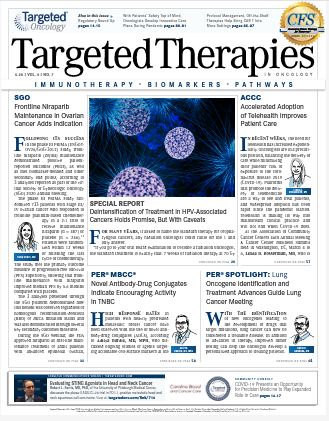Medical Meeting Planners Pivot to Share Advances With the Oncology
"We will continue to find innovative ways to come together both in person and virtually to more widely disseminate valuable information regarding important advances in cancer research."

The coronavirus disease 2019 pandemic has brought about many firsts and lasts for those of us in oncology. As I prepared to write this month’s editorial, I thought about how quickly medical conferences would need to adapt in the coming months. I reached out to my colleagues at Targeted Therapies in Oncology and learned that the 37th Annual Miami Breast Cancer Conference® was one of the last “fully live” congresses they covered. The American Association for Cancer Research (AACR) Annual Meeting, which typically draws over 20,000 people, this year was run virtually after an initial delay. The American Society of Clinical Oncology (ASCO) Annual Meeting, which I often joke with my colleagues is the “Mount Everest” of cancer research, typically attended by 40,000 to 50,000 people from around the world who are dedicated to advancing cancer treatments, will similarly occur virtually in 2020.
These facts take your breath away and lend further perspective to the far-reaching impact that this public health crisis has had on every aspect of our personal and professional lives.
But we can and must adapt, and I firmly believe that in the most trying times, innovation and ingenuity enable us to leap forward. Even before the pandemic, major congresses such as the AACR, ASCO, and the European Society for Medical Oncology could not be even better attended because of a variety of factors including cost, distance, and obstacles and delays in obtaining visitors’ visas for foreign attendees. Although the technology to make these meetings widely accessible virtually in real time was available, putting it in motion was not a priority; after all, nothing beats attending in person. But the situation has changed and conference organizers have had to adapt quickly. It’s almost certain that the virtual format will allow more people to attend. Without the distractions and chaos that accompany large meetings, it is likely more people will be fully engaged and toggle between sessions of interest with ease. What will be missed and cannot be replaced: the personal interactions, networking, and casual conversations over dinner that unite cancer researchers and often are the seeds of very fruitful collaborations and lifelong friendships. I will certainly miss that this year.
I am also confident that when this period of pandemic ends, cancer care and research will somehow be better for it. We will continue to find innovative ways to come together both in person and virtually to more widely disseminate valuable information regarding important advances in cancer research. We will similarly find more efficient ways to deliver expert care that also minimizes the burden on patients who would otherwise have to travel long distances. For that reason, I’m excited about the new meeting format—it’s certainly a first for me.

How Data Help Physicians Improve Operations and Achieve Health Equity
May 13th 2024A US health care executive survey found 30% see health equity solely as a social concern. Yet, it's about ensuring everyone has a fair shot at optimal health. Utilizing standardized data can shift care from reactive to preventive, easing strain on systems.
Read More
How Data Help Physicians Improve Operations and Achieve Health Equity
May 13th 2024A US health care executive survey found 30% see health equity solely as a social concern. Yet, it's about ensuring everyone has a fair shot at optimal health. Utilizing standardized data can shift care from reactive to preventive, easing strain on systems.
Read More
2 Commerce Drive
Cranbury, NJ 08512
All rights reserved.